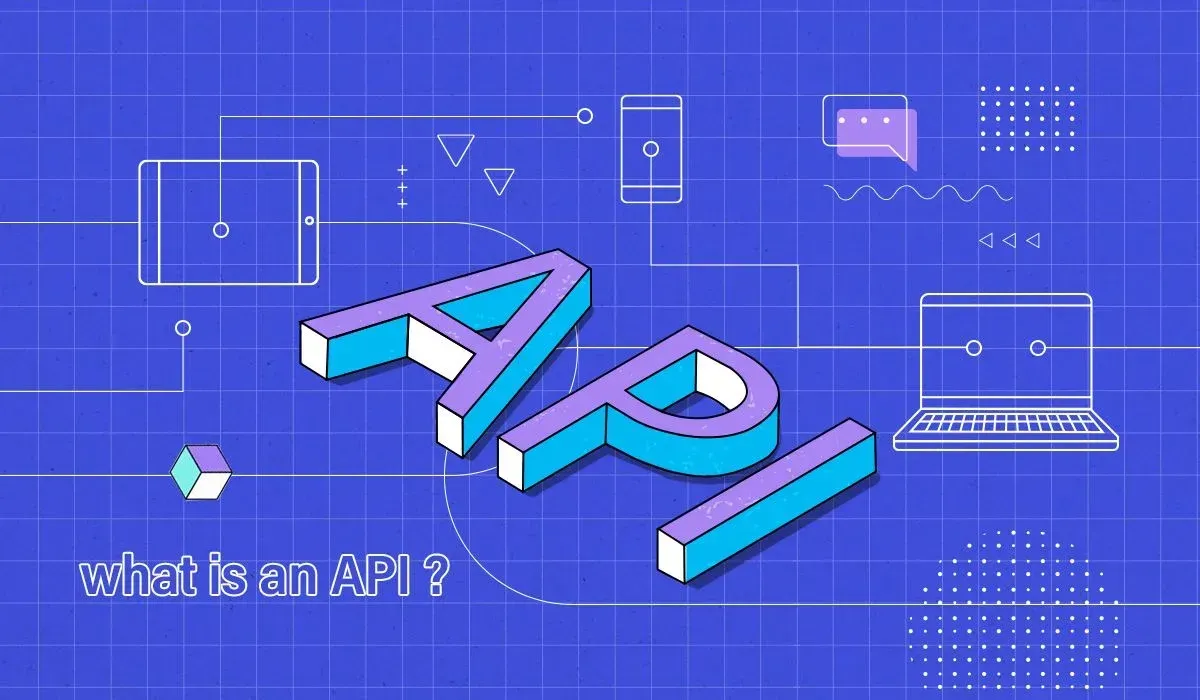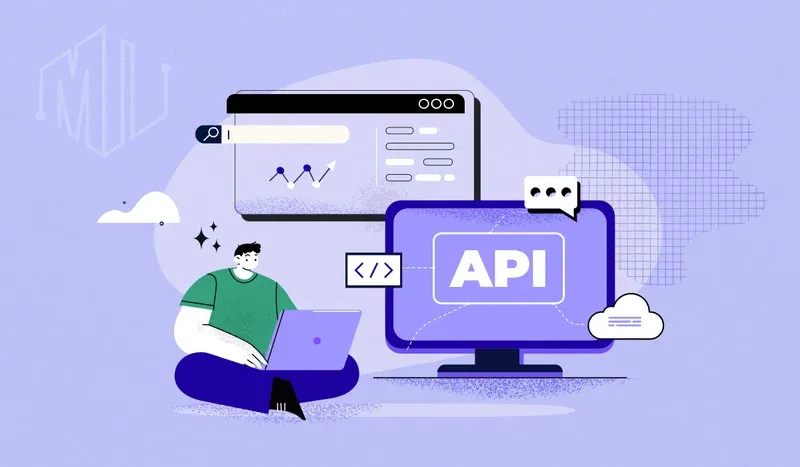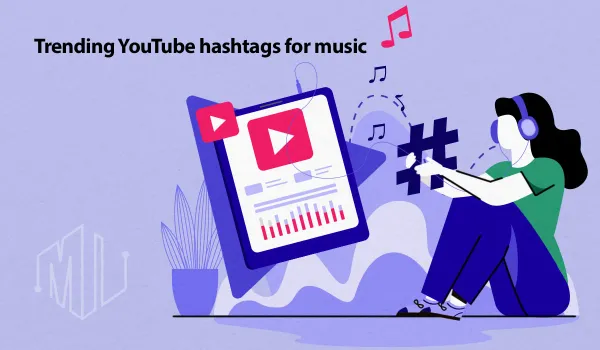What is an API?
API stands for Application Programming Interface is referred. APIs serve as a middleman between various software systems.

You may not be familiar with the phrase "API," or maybe you have a hazy sense of what an API is or what they do. Let's get started. Either way, we're here to assist you.
API stands for Application Programming Interface is referred. APIs are a collection of methods and functions that enable the development of apps. They get access to the information and functions of different programs, services, or operating systems.
If you need clarification on what an API is, read on.
✨ Unleash the Power of AI with MagicalAPI!
Whether you’re optimizing YouTube content, extracting LinkedIn data, or evaluating resumes, MagicalAPI is your one-stop solution! Discover the diverse range of AI services tailored to meet your every need. Dive in and elevate your digital experience today!

What Is An API?
APIs serve as a middleman between various software systems. They enable "talking" between two unconnected programs.
Let's take the example of a stockbroker actively involved in trading and the financial markets. An API may connect to a collection of automated trading algorithms connected to the trader's favorite trading broker platform through an API. This enables you, the trader, to execute electronic transactions or see real-time quotations and pricing data. By offering all the necessary building elements, good APIs make it simpler for programmers to construct computer software. Because you may combine and reuse APIs indefinitely to create new services, they are sometimes compared to Legos!
After finding out what an API is, let's see what it is not. First, the API is the code that controls the server's access point(s), not the database or even the server itself. An API serves as a means of communication amongst developers, much like a common language.
Types of APIs
APIs, come in various forms.
They come in various forms and serve different purposes. Here's a breakdown of some common types of APIs:
- RESTful APIs:
- Representational State Transfer (REST) is an architectural style for designing networked applications.
- RESTful APIs use HTTP requests to perform CRUD (Create, Read, Update, Delete) operations on data.
- They are stateless, meaning each HTTP request from a client contains all the information needed for the server to fulfill the request.
- SOAP APIs:
- Simple Object Access Protocol (SOAP) is a protocol for exchanging structured information in web services.
- SOAP APIs use XML as their message format and usually operate over HTTP or SMTP.
- GraphQL APIs:
- Developed by Facebook, GraphQL allows clients to request only the data they need.
- Unlike REST, where endpoints return fixed data structures, GraphQL allows clients to specify the structure of the response.
- WebSocket APIs:
- Provide full-duplex communication channels over a single, long-lived connection.
- Unlike HTTP, which is request/response-oriented, WebSockets allow for two-way communication between a client and server.
- RPC (Remote Procedure Call) APIs:
- Allow a program to cause a procedure (subroutine) to execute in another address space, often on another computer in a network.
- The communication between the caller and the callee is similar to a function call.
- Open APIs (Public APIs):
- Available to developers and other users with minimal restrictions.
- Companies provide open APIs to allow third-party developers to build apps or services that leverage their platform's capabilities.
- Internal APIs (Private APIs):
- Not exposed to external users or developers.
- Used within a specific organization or company to ensure different services and systems can communicate effectively.
- Partner APIs:
- Shared with specific external organizations or partners.
- Offers a more controlled and selective way of exposing data and functionalities.
- Composite APIs:
- Combine data or services from multiple sources or endpoints into a single API call.
- Library-based APIs:
- Libraries or software development kits (SDKs) that provide a set of predefined functions or routines that developers can use to interact with software components or services.
another category for API is:
- Web APIs:
- Enable communication over the Internet.
- Database APIs:
- Interface with databases.
- Operating system APIs:
- Assist with system functions.
- Library APIs:
- Access software library components.
Each API type addresses distinct needs in the realm of software development, simplifying tasks and enhancing efficiency.
How an API works?
An API, or Application Programming Interface, acts like a middleman between two different software applications, allowing them to communicate with each other.
When one software wants to access a feature or data from another software, it sends a request using the API. The API takes this request, processes it, and ensures the correct data or function is accessed. After processing, the API returns the desired information or outcome back to the requesting software.
This whole process happens swiftly, and users often don’t even realize it's taking place. In essence, APIs serve as bridges, making sure software applications can efficiently share and utilize functions and data.
Understanding APIs Through Real-World Examples
When you purchase movie tickets online, think of the process: you choose your movie, enter details, and receive your tickets. But what happens behind the scenes between your selection and the ticket delivery?
That's where APIs come in! They're like a digital concierge, connecting different services seamlessly. For instance, just as a hotel concierge helps you with both internal services like dinner reservations and external ones like theatre tickets, APIs bridge different software programs, ensuring they "speak" the same language.
Another analogy is using a restaurant's mobile app. When you place an order, the app, through an API, communicates your request to the kitchen. Once your meal is ready, the same system ensures you receive what you ordered. In both scenarios, APIs are the unsung heroes, facilitating smooth digital interactions.
The Benefits of Using APIs:
Communication: APIs allow different software applications to interact and communicate effortlessly.
- Data Sharing: With APIs, software can exchange data smoothly without manual intervention.
- Integration: APIs enable businesses to combine various tools and platforms, enhancing the overall functionality.
- Efficiency for Developers: Instead of building features from scratch, developers can use APIs to access existing functionalities, saving both time and resources.
- User Experience: APIs can significantly improve the user experience by streamlining processes and reducing wait times.
- Fostering Innovation: APIs open the door for new combinations of features and services, promoting creativity and advancement in the tech industry.
By leveraging these benefits, businesses and developers can optimize their operations and offerings in today's interconnected digital landscape.
read more: APIs in E-commerce: Streamlining Processes and Improving Customer Experience

What are API Protocols and Architectures?
APIs rely on specific protocols and architectures to function effectively. An API protocol, like HTTP or SOAP, determines how the API delivers and receives data. Meanwhile, the API architecture, such as REST or Graph QL, dictates how the API is structured and interacts with systems.
These elements ensure that APIs communicate correctly and deliver the expected results. Understanding the protocols and architectures behind APIs is vital for efficient and secure API integration.
Conclusion
APIs are a powerful way for developers to save time and money when building applications by allowing them to access existing code from other applications without having written it themselves.
With so many different types of APIs available today - from web services like Google Maps and Twitter, payment processing systems like PayPal, social media platforms like Facebook, and cloud storage solutions like Dropbox - there is no shortage of options when it comes to choosing which ones best fit your project's needs.
By understanding how these different Magical API products work and what they offer, you can make sure you make the right choice for your next development project!
FAQ
What is an API?
An API (Application Programming Interface) is a set of rules that allows different software entities to communicate with each other.
How do APIs work?
APIs act as intermediaries between two software applications, enabling them to exchange data or functionality seamlessly.
What are the benefits of using APIs?
APIs improve communication between applications, streamline data sharing, enhance integration, boost efficiency for developers, improve user experience, and foster innovation.

Join to our community
By joining our Discord server, get assistance, and troubleshoot any challenges you may encounter while using our services.
Join us on Discord




